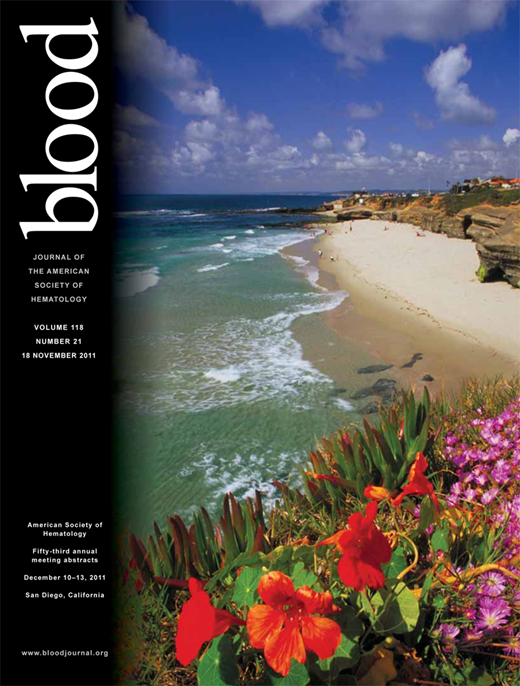Abstract
Abstract 2177
A reliable phenotypic marker to distinguish peripherally induced CD4+FOXP3+ regulatory T cells (iTregs) from natural thymus-derived CD4+FOXP3+ regulatory T cells (nTregs) ex vivo would aid in the understanding of Treg biology and may accelerate the design of immune modulating therapies. As an example, if Tregs in the tumor microenvironment were shown to be predominantly induced, rather than thymus-derived, then strategies designed to prevent their accumulation would be influenced accordingly. Recently, the transcription factor Helios was identified as a potential marker expressed by nTregs but not iTregs. Such a marker would allow for identification of origin (peripheral versus thymic) in otherwise phenotypically identical T cells without more laborious methods that have been proposed such as analysis of FOXP3 methylation patterns. Given these findings, we undertook a study of Helios expression patterns in in vitro induced and natural Tregs as well as Tregs in the solid tumor and lymphoma microenvironments. Methods: CD4+FOXP3- conventional T cells (Tc) were isolated from the spleens of wild type C57BL/6 or FOXP3-GFP transgenic mice and treated with TGF-beta (10ng/mL) and low dose IL-2 under conditions of CD3 stimulation or both CD3 and CD28 co-stimulation for 5 days to induce Tregs. The resulting cells were analyzed by flow cytometry for Helios and FOXP3 expression. In some experiments, Tc were treated with TGF-beta and all-trans retinoic acid (ATRA) for five days and analyzed for Helios, FOXP3, CD39 and CD73. Treg suppression assays were performed by co-plating Tregs with CFSE-labeled Tc at 1:4 ratios (Treg:Tc) under conditions of CD3/CD28 stimulation for 3 days. Suppression of Tc proliferation was then quantified by CFSE flow cytometry. In some experiments, C57BL/6 mice were inoculated subcutaneously with syngeneic melanoma cells (B16F10 cells). Similarly, BALB/c mice were inoculated with syngeneic B cell lymphoma cells (A20 cells). Mice were euthanized when tumors reached 2cm in size and single cell tumor suspensions were created. Tumor infiltrating CD4+ T cells were subsequently evaluated by flow cytometry. Results: Tregs induced by TGF-beta in the context of CD3 stimulation alone were nearly uniformly Helios negative while those induced by TGF-beta during CD3 and CD28 co-stimulation were predominantly Helios positive. TGF-beta treatment was more effective at inducing Tregs under conditions of CD3 and CD28 co-stimulation. The addition of ATRA to cultures further increased the number of resultant iTregs as compared to identical conditions lacking ATRA. Although more numerous, ATRA induced Tregs demonstrated decreased Helios expression, decreased suppressive function, identical expression of the ectonucleotidase CD39 but higher levels of the ectonucleotidase CD73 compared to Tregs induced without ATRA. Melanoma and B cell lymphoma infiltrating Tregs expressed high levels of Helios. Helios expression by tumor infiltrating Tregs was greater than in Tregs from the spleens of tumor-bearing mice and from spleens of non-tumor bearing control mice. Conclusions: 1. Helios expression by iTregs is dependent upon stimulation conditions and is increased by CD28 stimulation but inhibited by ATRA treatment. 2. Helios should not be used as a marker for Treg origin. 3. Tumor infiltrating Tregs are nearly uniformly Helios positive and express Helios at higher levels than peripheral circulating Tregs.
No relevant conflicts of interest to declare.
Author notes
Asterisk with author names denotes non-ASH members.

